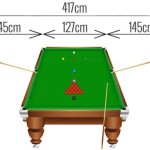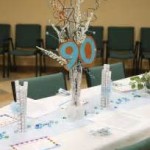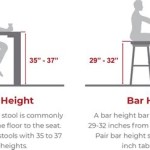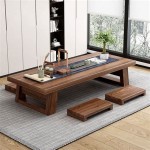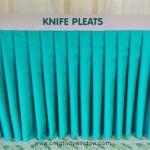Distressed Wood and Metal Coffee Table: A Comprehensive Guide
The distressed wood and metal coffee table represents a compelling blend of rustic charm and industrial functionality. This furniture piece often serves as a focal point in living rooms and other social spaces, providing both aesthetic appeal and practical utility. Its design typically incorporates reclaimed or intentionally aged wood paired with a robust metal frame, creating a visual contrast that resonates with a wide range of interior design styles.
Understanding the nuances of distressed wood and metal coffee tables requires consideration of several key aspects, including the materials used, construction methods, design variations, and the overall impact on the room's aesthetic. This article provides a comprehensive exploration of these elements, offering insights into the characteristics that define this particular style of coffee table.
Materials and Construction: A Foundation of Character
The defining characteristic of a distressed wood and metal coffee table lies in the materials chosen for its construction. The wood component often features reclaimed lumber, such as pine, oak, or fir, sourced from old barns, factories, or other structures destined for demolition. This reclaimed wood inherently carries imperfections, including knots, nail holes, and variations in grain pattern, which contribute to its unique and aged appearance. Alternatively, manufacturers may employ new wood and apply various distressing techniques to simulate the look of age and wear.
These distressing techniques can involve a multitude of processes. One common method is the use of wire brushes to create texture and erode the softer parts of the wood grain, resulting in a tactile and visually pronounced surface. Another approach involves the strategic application of stains and glazes to highlight the wood's natural features and create a sense of depth. Additionally, techniques such as sanding, scraping, and even physically damaging the wood are employed to authentically mimic the effects of time and use. The specific techniques used will influence the final character and aesthetic of the tabletop.
The metal component of the coffee table typically consists of steel or iron, often finished with a powder coating or a dark, matte paint. The metal frame provides structural support and complements the rustic qualities of the wood. It can be designed in a variety of configurations, ranging from simple, minimalist legs to more elaborate and decorative bases. The metal may also undergo treatments to enhance its aged appearance, such as distressing, rusting, or the application of a clear coat to protect the metal while preserving its raw aesthetic. The gauge and welding techniques used on the metal frame dictate the table's overall durability and weight capacity. A well-constructed metal frame ensures the table's stability and longevity.
The interaction between the distressed wood and the metal frame is crucial to the overall design. The contrast between the warm, natural tones of the wood and the cool, industrial feel of the metal creates a visually striking effect. The texture of the distressed wood is often juxtaposed with the smooth, clean lines of the metal frame, contributing to the table's unique character.
The method of joining the wood and metal components is also a significant factor in the table's quality and durability. Common joinery techniques include bolting, welding, and the use of screws or lag bolts. Secure and robust joinery ensures that the table can withstand regular use and maintain its structural integrity over time.
Design Variations and Aesthetic Impact
Distressed wood and metal coffee tables are available in a vast array of designs, catering to diverse aesthetic preferences. The shape of the tabletop can vary from rectangular and square to round and oval, each shape offering a different visual impact and fitting different spatial arrangements.
Rectangular coffee tables are perhaps the most common design, offering ample surface area and a classic, versatile aesthetic. They are well-suited for larger living rooms and can accommodate a variety of items, such as books, magazines, and decorative objects. Square coffee tables provide a more symmetrical and balanced look, often used in smaller spaces or as a complement to modular seating arrangements.
Round coffee tables offer a softer, more organic feel, promoting conversation and creating a sense of openness. They are particularly well-suited for smaller living rooms or spaces with curved furniture. Oval coffee tables combine the benefits of both rectangular and round designs, providing ample surface area while maintaining a more fluid and organic shape.
Beyond the tabletop shape, the design of the metal frame also plays a significant role in the table's overall aesthetic. Simple, minimalist frames provide a modern and understated look, allowing the distressed wood to take center stage. More elaborate frames, featuring decorative details or geometric patterns, can add a touch of visual interest and complexity to the design. Frames can be made from solid metal bars or tubes or from expanded metal. Frame designs can also incorporate shelves either made of metal or wood for storage. Some tables incorporate caster wheels for easy mobility.
The finish of both the wood and metal components can significantly impact the table's overall aesthetic. A light, natural finish on the wood can create a bright and airy feel, while a darker stain can add a sense of warmth and sophistication. The metal frame can be finished in a variety of colors, ranging from classic black and gray to more vibrant hues. The choice of finish should complement the surrounding decor and reflect the desired aesthetic.
Ultimately, the design of a distressed wood and metal coffee table should be carefully considered in relation to the overall style of the room. The table should complement the existing furniture and decor, creating a cohesive and harmonious aesthetic. Whether the goal is to create a rustic farmhouse, an industrial loft, or a modern eclectic space, a well-chosen coffee table can serve as a key element in achieving the desired look.
Functionality and Practical Considerations
While aesthetics are paramount, the functionality of a distressed wood and metal coffee table should also be considered. The size of the table should be appropriate for the size of the room and the seating arrangement. A table that is too large can overwhelm the space, while a table that is too small may not provide adequate surface area.
The height of the table should be comfortable for reaching from the seating area. Ideally, the tabletop should be at approximately the same height as the seat cushions or slightly lower. This allows for easy access to drinks, snacks, and other items without having to strain or reach awkwardly.
The durability of the table is also an important consideration. The materials used should be robust and able to withstand regular use. The wood should be properly sealed to protect it from moisture and stains, and the metal frame should be corrosion-resistant. A well-constructed table should be able to withstand years of use without showing signs of wear or damage.
The surface of the distressed wood can present challenges for some users. The uneven texture and imperfections that contribute to its aesthetic appeal can also make it difficult to clean and maintain. Spills should be cleaned up promptly to prevent staining, and the surface should be regularly dusted to prevent the accumulation of dirt and debris. The use of coasters and placemats can help to protect the surface from scratches and spills.
The weight of the table can also be a factor to consider, particularly if it needs to be moved frequently. Tables constructed from solid wood and heavy metal frames can be quite heavy, making them difficult to maneuver. Tables with lighter frames or caster wheels can be easier to move and reconfigure.
Finally, the safety of the table should be considered, particularly if there are young children in the household. Sharp edges and corners should be avoided, and the table should be stable and resistant to tipping. The materials used should be non-toxic and free from harmful chemicals.
In conclusion, the distressed wood and metal coffee table offers a unique blend of style and functionality. By carefully considering the materials, design variations, and practical considerations, it is possible to select a table that perfectly complements the living space and provides years of enjoyment.

Handmade Reclaimed Wood Steel Coffee Table Vintage Rustic

Pin On Coffee Table Ideas

Industrial Acacia Wood Coffee Table Rustic Furniture

Round Coffee Table Reclaimed Wood Metal Base

Square Coffee Table Rustic Reclaimed Wood And Steel Box Diy

Gezen Round Coffee Table With Open Storage 38 5 Wood Sofa Rustic Accent Sy Metal Legs For Living Room Com

Nathan James Stella Reclaimed Oak Black Round Modern Nesting Stacking Accent Industrial Wood Metal Cocktail Coffee Table Set Of 2 34002 The Home Depot

Live Edge Reclaimed Wood Coffee Table With Metal U Shaped Leg In Natural Finish Furniture World

Modern Industrial Coffee Table Metal Distressed Wood Danya B Target

Handmade Industrial Coffee Table Reclaimed Solid Wood Rustic Farmhouse Style Metal Steel Base Vintage Plank Top Made In Britain Shabby Bear Cottage

